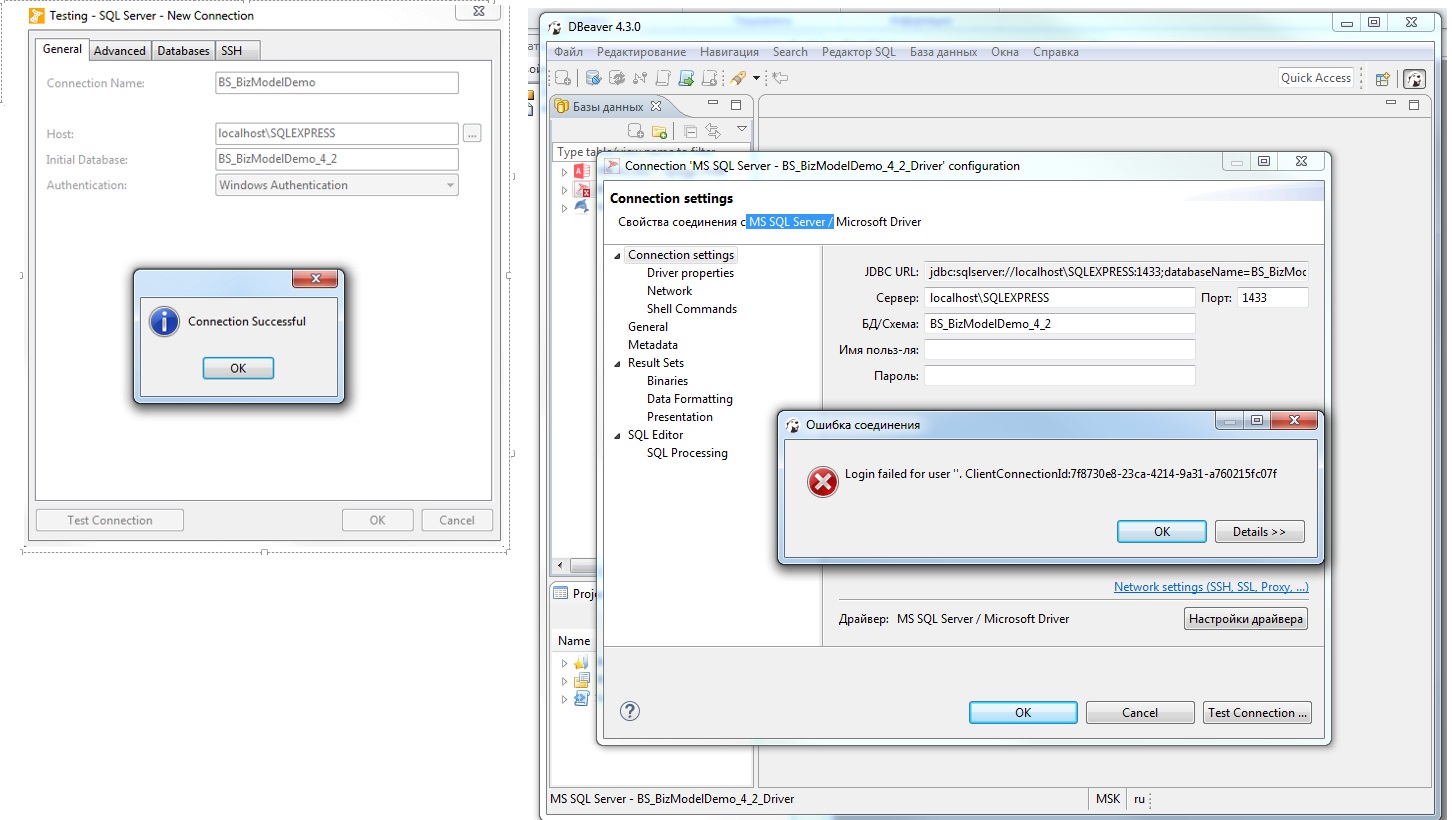SQL Server (starting with 2008), Azure SQL Database, Azure SQL Data Warehouse, Parallel Data Warehouse: More Examples. Add two months to a date, then return the date: SELECT DATEADD(month, 2, '2017/08/25') AS DateAdd.
In this video you will learn how to move/migrate your local database or on-primises to SQL Azure database. After that, you will learn how to move/migrate SQL Azure database to local database on. One possible option is DBeaver. DBeaver is a free, universal SQL client that can connect to numerous types of databases-one of which is MySQL. I want to show you how to install and use DBeaver to. Connecting to SQL Azure Data from DBeaver via ODBC Driver for SQL Azure. Follow the steps below to establish a connection to SQL Azure in DBeaver. In the Database menu, select New Database Connection. In the Connect to database wizard, select ODBC and click Next. Enter the previously configured DSN in the Database/Schema field. Database name and version SQL Server(Azure) 12.0.2000.8. Driver name Azure SQL Server Do you use tunnels or proxies (SSH, SOCKS, etc)? Describe the problem you're observing: After I connect to a SQL Azure, I can't open 'Schemas' folder. Steps to reproduce, if exist: Add a new connection to SQL Azure and connect to it. Open any DB but.
Step-by-step tutorial on connecting to SQL Server with DBeaver.
Once you've installed DBeaver, you'll probably want to connect to a database. below are instructions for connecting to SQL Server using DBeaver on a Mac.
Note that, although this tutorial uses SQL Server, DBeaver supports many different database management systems.
Launch DBeaver
Click on the DBeaver icon (either in your Launchpad or the Applications folder) to launch the DBeaver application.
Launch the New Connection Wizard
If this is the first time you've launched DBeaver, you'll probably be prompted with the Create new connection dialog.
Expand the SQL Server node, select jTDS driver, and click Next >.
For this tutorial I selected jTDS driver, but by all means select another driver if you prefer.
If the Create new connection wizard doesn't automatically appear when you open DBeaver, go to Database > New Connection to initiate this wizard.
Enter Connection Settings
Enter the connection settings for the SQL Server instance that you'd like to connect to.
If the SQL Server instance is running on your local machine, use localhost.
Also click Test Connection to see if there are going to be any problems with the connection or not.
Download Driver Files (if required)
The connection wizard will tell you if you need to download any driver files. If you do, select the file/s and click Download.
Success Dialog Box
Once the driver has downloaded, a Success dialog is displayed. Click OK.
This dialog box would have appeared at the previous step if you didn't need to download a driver.
Continue with the Connection
Now that the driver has been downloaded, click Next > to continue with the connection.
Network Settings
This step gives you the option of entering any network settings that are required to access the SQL Server.
In this case, the SQL Server is running locally, so leave the default settings and click Next >.
Finish
Change any settings as required. For this tutorial, I left them all at the default settings.
Click Finish to create the connection.
That's it. We just made a new connection to SQL Server with DBeaver.
The DBeaver interface is now displayed:
Data can be inserted in a table either using GUI or TSQL. Both are very simple ways.
In TSQL, DBAs use INSERT command to add new rows in a table.
There are three methods to insert data in table using TSQL:-
METHOD 1-
In TSQL – This method inserts value in table without specifying column name.
Syntax –
Dbeaver Azure Sql Server
INSERT INTO table_name VALUES (value1, value2, value3,……)
Example – Below example creates a table Department and inserts value in it.
CREATE TABLE Department
(
Department_ID INT PRIMARY KEY,
Department_Name VARCHAR(20),
)
Below script inserts data into table Department.
INSERT INTO Department VALUES
(101,’History’),
(102,’Pol Sci’)
(103,’law’),
(104,’Computer Scince’),
(105,’arts’),
(106,’physical’),
(107,’Defense’)
SELECT * FROM Department
METHOD 2 –
In TSQL – this method inserts data in table however, you must specify the columns in which data is to be inserted.
Syntax-
Insert into table_name (column1),(column2),(column3)VALUES(value1,value2, value3)
Example – Below example creates a table student_info and inserts value in the columns of table.
Dbeaver Azure Sql Server Connection
CREATE TABLE Student_info
(
SNo INT Primary Key,
Name Varchar(50) NOT NULL,
Gender CHAR(2) CHECK(Gender=’M’ OR Gender= ‘F’),
Data_capture_date Datetime Default GETDATE(),
Phone_number INT UNIQUE
Department_ID INT FOREIGN KEY REFERENCES Department(Department_ID)
)
Below script inserts data in table Student_info which contains six columns
INSERT INTO Student_info ([SNo], [Name], [Gender], [Phone_number], [Department_ID]) VALUES
(1,’Rajesh’,’M’,2225215222,101),
(2,’Ajay’,’M’,454212122,105),
(3,’Sachin’,’M’,4435453221,104)
SELECT * FROM Student_info
METHOD 3 –
In TSQL – SELECT INTO command is used to insert data into table. This method inserts data from one table to another table. In the process, it always creates a new destination table. User cannot insert data into existing table using this method.
Syntax –
SELECT * INTO detination_table FROM Source_table.
Example – Below example inserts data into table newbackup from table student_info. In the process, it also creates the table newbackup.
SELECT * INTO newbackup FROM Student_info
The below image from object explorer shows that newbackup table is also created.

GUI METHOD –
GUI method in SSMS is also used to insert data in table.
Dbeaver Azure Sql Server Express

Use below sequence of steps as shown in image below –
1 Open Object explorer in SSMS.
2 Right click on table in which you want to insert data.
3 Click on edit top 200 rows.
4 Type values in the columns of table as shown below.
5 Close the query window to save data in table.
